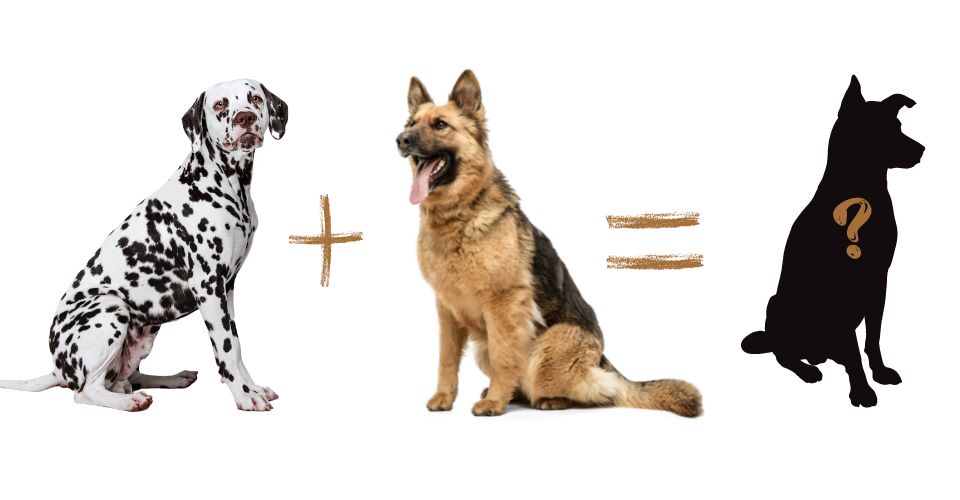Initially made for working and hunting, Patterdale Terriers are popular pet dogs today. They hold a distinctive position among pet lovers due to their willingness to work, protective nature, and above all, their playful and loving nature.
Patterdale Terriers have strong teeth, triangular ears, a muscular neck, strong and straight legs, and a smooth and well-coordinated gait.
Is Patterdale Terrier a good fit for you?
Let us find out!
Patterdale Terrier Overview
Before diving into the details of the Patterdale Terrier, first, take a quick look at its breed overview.
Patterdale Terrier Breed Overview
Height: 10 to 15 inches
Weight: 11 to 13 pounds
Lifespan: 11 to 14 years
Group: Terrier
Colors: Black, Blue, Tan, Chocolate, and Red
Price: $400 to $800
Temperament: Confident, outgoing, playful, independent
Suitable for: Outgoing parents, families looking for a small watchdog
Characteristics of Patterdale Terrier
|
Energy: |
Health: |
||
|
Shedding: |
Trainability: |
||
|
Intelligence: |
Ease of Grooming: |
||
|
Sociability: |
Exercise Requirements: |
Patterdale Terrier History
Patterdale Terriers are the decedents of Fell Terriers and are named after Patterdale, a village in Northern England, where they originated from. They were originally bred in the second half of the twentieth century for hunting purposes, mainly for foxes and rabbits. With time, they have gained popularity among farmers and are being widely used for herding and guarding purposes. The breed was recognized by the United Kennel Club (UKC) in 1995. It is, however, not recognized by the American Kennel Club (AKC).
Patterdale Terrier Temperament
Patterdale Terriers are quite friendly with the people around them. They are always enthusiastic about playing with and spending time with their ‘hoomans’—especially the children. Though not too much, but due to the intense friendliness with people, they can suffer from separation anxiety if they are left alone for a long time.
They are quite energetic, very quick, and hardworking. In fact, they are always into one or another game. You will hardly find a Patterdale Terrier sitting calmly. Due to these personality traits, they require an open and big space to live in and an energetic owner to play with.
They can also be used as guard dogs, thanks to their loyalty and intelligence. They are good at watchdogging, and because of their bravery, they tend to protect the people around them from whatever they perceive as a threat. However, before assigning them the duty of guarding, you should give them guard dog training.
Their downsides include stubbornness and a high prey drive. Patterdale Terriers can become stubborn and refuse to follow commands during training. Likewise, their high prey drive can cause trouble as small animals can distract them from exercise or training.
Patterdale Terrier Dietary Requirements
Patterdale Terriers are highly active dogs and therefore require a healthy and balanced diet to provide energy for their physical activities. In general, adult Patterdale Terriers require about 300 calories a day. Moreover, their daily diet should consist of about 15% meat.
A cup of high-quality dog food is enough. You can divide this quantity into two or three meals. However, unlike in the adult dogs that can eat the whole quantity in a single meal, young puppies should have at least two to three meals, as it can keep their digestive system in good order.
Note that the requirements given above are for the adult and fully-grown Patterdale Terriers. This amount varies according to the size and age of dogs. Take a look at the Patterdale Terrier feeding chart below to get an idea about how often you should feed your Patterdale Terrier.
| Age (Months) | Number of Meals |
| Two to Three | Four |
| Three to Six | Three |
| Six to 12 | Two to Three |
| 12 | Two |
Patterdale Terrier Size
Patterdale Terrier is a small dog breed with an average size ranging between 10 to 15 inches and weighing around 11 to 13 pounds. Given their small size, many think they would make a perfect apartment dog, but that is not the case. They have high exercise requirements and are thus suitable for owners with a fenced lawn, where their Patterdale can jump around.
However, it doesn’t mean that you cannot keep them in apartments. If you can meet their exercise requirements, you can choose the breed as your pet if you are an apartment-dweller.
| Age | Average Weight (Pounds) |
| One Month | 1 to 2 |
| Three Moths | 5 |
| Six Months | 7 |
| Nine Months | 10 |
| One Year | 12.5 |
Patterdale Terrier Exercise Requirements
As mentioned earlier, Patterdale Terriers are high-energy dogs; they require about an hour of exercise every day. While how often you should walk your dog depends on your dog’s personality, on average, a Patterdale should walk around 15 miles a week. That said, short exercise sessions are better than one long exercise session.
Patterdale Terriers love running, so you can let them tag along when you are going out for a morning or an evening walk. You can go hiking, sprinting, or cycling with your dog running along. However, before you do that, you should have to leash train your dog.
These dogs get bored very quickly, so you will also need to provide your pup with mental stimulation and keep him busy with different puzzles and games to avoid behavioral issues like barking at nothing due to boredom.
Patterdale Terrier Training
Despite being one of the smartest dog breeds, Patterdale Terriers are not easy to train.
Here is why:
- They can lose interest in pretty much anything, and dog training is one of them. To overcome this, you should keep the training sessions short.
- Due to their strong herding and hunting instincts, Patterdale Terriers often get distracted and enticed by small animals or moving bikes. They might run after them in no time. You need to be your canine friend go through puppy discipline training to counter this problem.
- You should start training your dog as early as three months of age. Socialize him and expose him to various people, sounds, and sights.
- These dogs are often prone to separation anxiety. Make sure that they are not left alone for extended periods. If some urgency precipitates you to leave them alone, arrange interactive toys and puzzles to keep them engaged.
- Always reward your pooch for good behavior. However, if your dog is experiencing weight issues, you can try different ways to train your dog without treats.
Patterdale Terrier Grooming Requirements
Patterdale Terriers are low-maintenance dogs. They have a short but dense coat that sheds moderately. Brushing it once a week is enough. Likewise, they do not require frequent bathing as well. Only bathe your dog when they get themselves into something muddy. Ensure that you use a vet-approved gentle dog shampoo to protect the necessary oils in your dog’s coat. These natural oils help your dog weather harsh environment.
You should also brush your dog’s teeth once or twice every week using dog toothpaste (never use human toothpaste). Also, regularly check for any tartar buildup and bad oral smell as they may indicate different oral issues.
You should trim your dog’s nails as required. Nevertheless, if your dog does a lot of workouts, his nails will be trimmed on their own. We advise using dog nail grinders instead of clippers.
Patterdale Terrier Health Concerns
Patterdale Terrier is an overall healthy dog breed. However, to ensure the well-being of your dog, you should always observe him closely and never miss a vet visit.
There are some diseases common in this breed, and you should seek medical assistance for your dog if you observe the sign of any of these in him.
Invertebrate Disc Disease (IVDD)
IVDD is an age-related degenerative health issue and is quite common in older dogs. In this disease, the vertebral discs exert pressure on the spinal cord after getting hardened, causing excruciating pain and impacting the overall nervous and coordination system. If medication and physical therapy don’t work, surgery would be recommended.
You can suspect IVDD in your dog if you notice the following conditions in him:
- Incontinence
- Inability to lift head
- Fragile movement
- Trembling
Pink Eye (Conjunctivitis)
Conjunctivitis is a condition in which the conjunctiva, the connective tissue in the eye, becomes inflamed. Although the causes of this dog eye infection can be many, usually it is either caused by allergy or bacterial infection. Though it may not cause blindness, it can be extremely painful as tear production is curbed. Apart from surgery, the disease can also be cured through medications.
The indications of pink eye are:
- Eye discharge
- Redness of the eye
- Swelling around the eye
Hypothyroidism
Hypothyroidism occurs when the thyroid gland fails to function properly, thus causing a deficit of thyroid hormone in the body and slowing down the body’s functioning, including metabolism rate. Moreover, the overall physical, as well as mental well-being, is jeopardized. In serious cases, it can be fatal. It is an incurable disease and can only be treated and managed with the administration of thyroid replacement hormone.
The signs and symptoms include:
- Weight gain
- Excessive shedding
- Lethargy
- Skin color changes due to dark pigmentation
Lens Luxation
Lens luxation occurs when the zonules holding the lenses in place break down, causing the eye lens to fall. It is a hereditary disease. Such dislocation of the eye lens is very painful and can render the eye dysfunctional if left untreated. Generally, the best treatment is surgery.
Watch for the following signs in your dog for identifying lens luxation:
- Tearful eyes
- Changes in the eye color
- Reluctant to go for a workout
Dysplasia
Dysplasia is the unrestrained growth of cells. If left untreated, there is a very high probability of such unrestrained growth to form cancer. It generally affects the hips and elbows in dogs. The exact causes of the disease are not known; nonetheless, numerous causes are associated with this anomaly: improper growth rates, exercise, or nutrition. The situation may become life-threatening.
The signs and symptoms are:
- A narrow stance
- Jumping instead of walking
- Lameness or lack of physical activity
- Loss of muscle mass around the affected joint
Three Reasons Why You Should Have a Patterdale Terrier
While in the past, Patterdale Terriers were popular among farmers due to their herding abilities, today, they are gaining popularity as pet dogs as well.
Below we have discussed three reasons that make them a great pet:
Patterdale Terriers Are Great Family Dogs
Patterdale Terriers are very loving and get along with people very easily. They are especially friendly with the children, provided they are not too irritating. They are also very cuddly, making them an excellent choice for you if you are into cuddling with dogs. They are energetic and playful, and hence, great workout partners.
Patterdale Terriers Are Good at Watchdogging
Being fast, intelligent, loyal, and energetic, Patterdale Terriers make excellent watchdogs. They recognize the differences between friendly and non-friendly stranger in no time, which make them one of the best guard dog breeds. They are often awake at night and can guard your door while you are asleep. Their quick movement is an advantage. They reach the people they perceive as a threat in a very short time as if they’re one of the fastest dog breeds.
Patterdale Terriers Are Not High-Maintenance
It is not costly to keep a Patterdale Terrier. They do not need any extra care, which is a great convenience for dog owners. Patterdale Terrier is an overall healthy dog breed. The only care they need arises when they are left alone because they suffer from separation anxiety. However, good and effective training can solve this problem as well. You can also use calming dog treats to calm your anxious dog.
Three Reasons Why You Should Not Have a Patterdale Terrier?
The cons of having a Patterdale Terrier are discussed below.
Patterdale Terriers Bark Loudly In the Dark
Dogs can excessively bark due to various reasons. In the case of Patterdale Terriers, barking is mainly due to the separation anxiety they suffer as night sets in and people around them go to sleep. They can also bark intermittently when they suspect any unfamiliar animal or a person in the vicinity of the house. Such is not a good experience, especially because their barks are very loud.
Patterdale Terriers Are Not Suitable for Old People
They are agile, swift, and high-energy dogs. They require a lot of physical activities to expend their energy and stay fit. Therefore, they don’t make a good fit for lazy or old people who cannot provide their exercise requirements. If you have a bit of a laidback personality, you should instead look into lazy or calmest dog breeds that have very little exercise needs.
Patterdale Terriers Are Strongly Prey Driven
These dogs have strong hunting instincts. If you have small and fragile pets home, say hamsters or rabbits, you should never let your Patterdale Terrier be alone with them. You can socialize your dog for good behavior with other dogs and small pets. However, you are advised never to leave them unsupervised with small children or pets.
The Positives
Friendly and affectionate
Good at watchdogging
Little grooming requirements
The Positives
Stubborn at times
High prey drive
High exercise requirements—which could be a plus if you have an active lifestyle
Conclusion
Patterdale Terriers are healthy, active, and appealing dogs. They are suitable for active dog parents and get along with children as well but should never be left alone with small children. If you can provide enough space and meet their exercise requirements, a Patterdale Terrier would be a great fit for you. Given their desirable features, they are mixed with other dog breeds to hybrid dogs. One such hybrid dog breed is Pocket Pitbull, which is created by the crossbreeding of Patterdale Terrier with American Pitbull Terrier.





